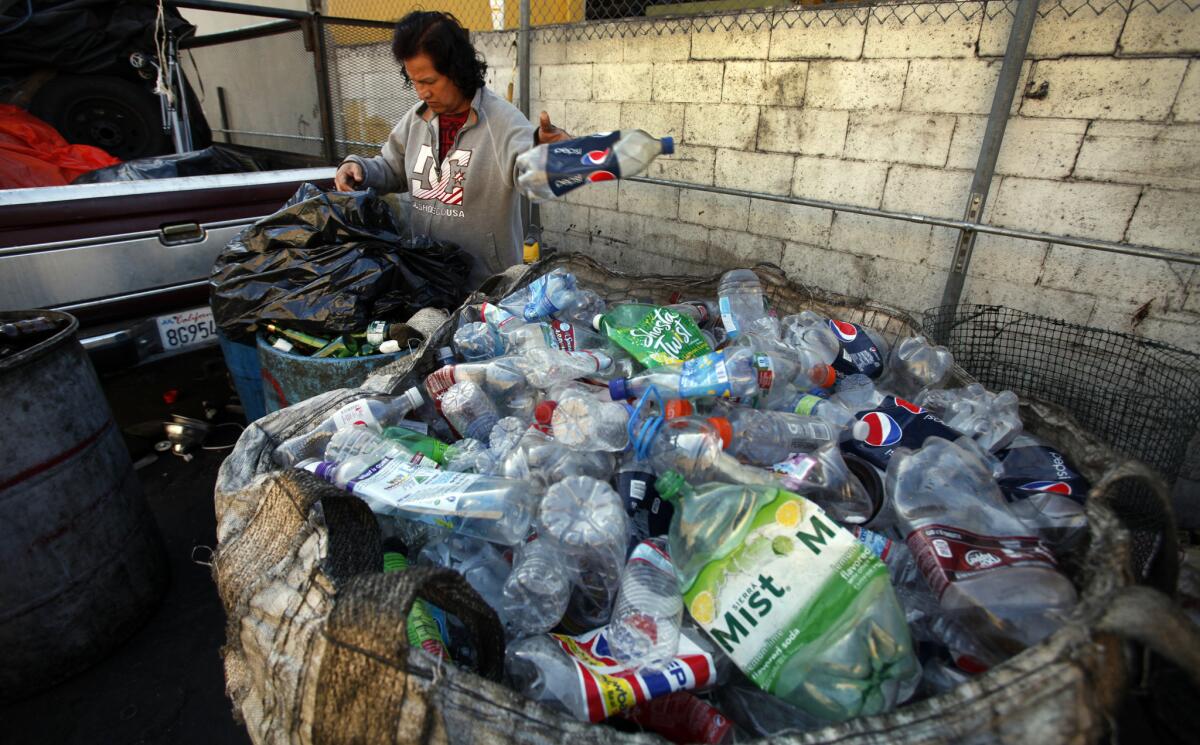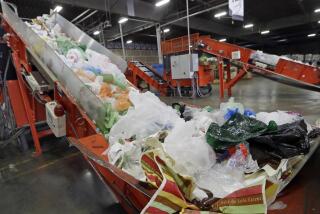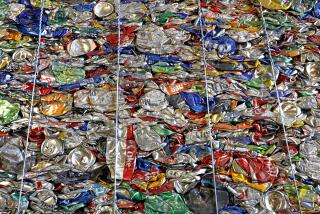Californians are recycling bottles less and less. Here’s what’s going on

In a state that prides itself as a global leader in protecting the environment, recycling rates for beverage containers have dropped to their lowest point in almost a decade amid the continued closure of centers that pay for bottles and cans and the fallout from changes to California’s recycling program.
Beyond the environmental concerns, the financial effects are also growing — pinching large supermarket chains and low-income residents.
Beverage container recycling rates in California have fallen below 80% for the first time since 2008, according to data recently released by the California Department of Resources Recycling and Recovery, or CalRecycle. In 2016, 79.8% of beverage containers were recycled, down from 81% in 2015. The beverage container recycling rate had reached a high of 85% as recently as 2013.
Southern California residents have fewer options to cash in on recyclables recently. The values of plastic, glass and aluminum have decreased, prompting many recycling centers to close in the last two years and putting pressure on the remaining centers, which are struggling to meet the demand with little funds.
According to CalRecycle, Southern California was home to 891 recycling centers as of Jan. 1 — down from 1,076 centers two years earlier.
With fewer locations to redeem containers, people looking to get cash for their bottles and cans have to travel farther to recycling centers, which can be busy and subject visitors to long waits.
Some grocery stores are taking a hit as well, thanks to a state requirement that supermarkets must have a recycling center within half a mile of the store or otherwise redeem the containers in the store or pay a daily fine. More than 300 recycling centers located close to supermarkets have closed since last year.
RePlanet, a recycling collection network that partners with grocery chains to provide nearby recycling centers, announced in January 2016 that it would be closing 191 of its recycling centers in California.
The company said it was shutting the locations in part because of a reduction in state fees and declines in the commodity pricing of aluminum and PET plastic. It also cited rising operating costs, such as increases in the minimum wage and requirements for health insurance and workers compensation insurance.
Mark Oldfield, communications director for CalRecycle, estimates that in peak years, there were 2,200 to 2,300 recycling centers in the state. The database now shows 1,680.
Many processing centers, which take recyclables from these centers, have closed too. There are 183 active ones in California, down from 196 in 2016 and 217 in 2015.
Environmentalists also have cause for concern. Mark Murray, executive director of environmental advocacy group Californians Against Waste, said the closed recycling centers mean that more than 3.5 million additional containers are littered or put in landfills every day.
Part of the reason for the closures, Oldfield said, is the cheap price of oil as a factor that contributes to the declining value of recyclables. As oil prices fall, so does the price of energy and the cost of producing new materials, making the price of recycled materials also fall.
Many recycling centers are under the California Redemption Value program, meaning they are required to take all types of CRV-eligible material. The program stipulated from the beginning that the state would subsidize the costs of materials like plastic and glass that generally do not pay for themselves.
CalRecycle has to adjust the processing payments at least every January, according to the statute. But critics of the program say the formula is not responsive to what’s happening in the market right now. Oldfield said CalRecycle is determining whether it will adjust payments in the remaining quarters of the year.
Murray said his group and other advocates have suggested potential fixes, such as returning subsidy payments to previous levels and allowing CalRecycle to provide supplemental money to rural recycling centers, which are most affected. The state Assembly’s budget subcommittee on natural resources introduced some short-term adjustments to the program, but after the state Senate rejected its inclusion in the main state budget bill, it’s unclear if or when those fixes would become law.
Until the state revamps the program in some way, advocates say recycling centers could continue to struggle and close, leaving even fewer options for the many people who rely on them for income and chipping away at California’s efforts to increase recycling overall.
Sciacca writes for the East Bay Times/McClatchy. Spacek writes for the Los Angeles Times.
To read the article in Spanish, click here
ALSO
A trade flap is roiling the solar industry — and Trump may have the final word
Soy ‘milk’? Even federal agencies can’t agree on terminology
California’s lakes are full again but fishing remains in a drought
More to Read
Inside the business of entertainment
The Wide Shot brings you news, analysis and insights on everything from streaming wars to production — and what it all means for the future.
You may occasionally receive promotional content from the Los Angeles Times.










